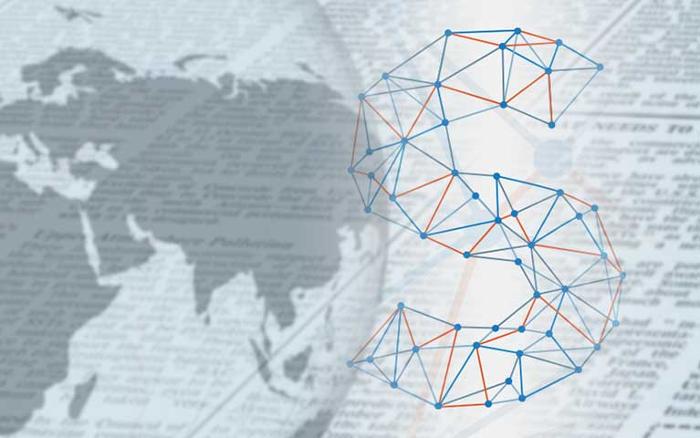

The latest trends in office building protection
The protection of office buildings is becoming increasingly sophisticated. The latest trends include: cameras with artificial intelligence, which follow patterns of behaviour for real-time surveillance; image processing software for forensic incident response; QR codes for access control, compatible with any system of turnstile or portal; cloud-based management tools that leverage big data; and radar and lidar systems for protecting gardens and parking areas.
The protection of office buildings is becoming increasingly important, according to Alfonso Castaño García, President of ASIS España, Anna Aisa Biarnés, Manager of the Catalan Association of Security Companies (ACAES) and Joaquín Collado Callau, President of CEUSS and Director of Security for Acciona Infraestructuras.
Alfonso Castaño, President of ASIS España, Chapter 143 of ASIS International, explains the latest trends in technology in the different areas of protection for safeguarding office building security. In the area of CCTV (closed-circuit television), he highlights the use of ‘cameras with artificial intelligence, which follow patterns of behaviour for real-time surveillance and image-processing software for forensic incident response’.
For Access Control, he indicates ‘QR codes, compatible with any system of turnstile or portal, which allow the use of virtual access cards on mobile devices and in particular the monitoring of visits by this means’. This allows the possibility to ‘monitor capacity, gain a preliminary idea of planned visits, and devote more human or technical resources to support them, enhancing user experience and maintaining a contactless system at all times’.
At the same time, he points to VMS and PSIM systems ‘as increasingly cloud-based management tools that leverage big data to go beyond system integration - something that is not always possible and is both technically and conceptually costly’. Alongside these are the generation models for control systems, which are ‘fully customisable to show data and generate reports, regardless of their source or their interaction with other systems, typical of Building Management Systems (BMS)’.
Turning to external physical security, he mentions ‘the widespread uptake of Radar and Lidar for the protection of large adjoining spaces (gardens and parking areas). Inside buildings, meanwhile, there are ‘systems, devices and barriers that can work in the future with IOT and domotics to create a common incident monitoring platform’.
Finally, he explains, with respect to ARC, SOC and GSOC, that ‘Alarm Receiving Centres (ARC) should include monitoring of all systems in the building, not just security systems, even if it involves another type of contract to access these services. The same is true for Security Operations Centres (SOC), which tend to be globalised (GSOC) by combining cybersecurity with physical protection’.
Adaptation to the new normal
Anna Aisa Biarnés, Manager of the Catalan Association of Security Companies (ACAES), explains that the so-called ‘new normal’ imposed on us by the pandemic has entailed the adaptation of safety and security plans for office buildings. This requires not only initial adaptation but also ongoing review in order to ensure compliance with the measures taken by the health authorities - ‘mandatory measures that are reflected in the safety and security plans, and adapted to the specific characteristics of the building concerned’.
According to the expert, ‘the director of security is responsible for this adaptation, on which the various operational protocols for the building are based. These not only need to be designed and implemented but must also be conveyed to the security personnel who protect the building, and, if necessary, the people who work in the building’.
In her view, the current requirements for protecting office buildings are essentially twofold. ‘On the one hand, we need to ensure compliance with Covid-19 prevention measures, which applies both to workers in and visitors to the building, through the uptake of new technologies that allow better control and traceability; and, on the other hand, we need to protect property, which has not yet reached pre-pandemic occupancy rates. And this is without forgetting the importance of information and communications security, which has been brought to the fore by the health crisis in the form of working from home or telework’.
Security in architectural design
Joaquín Collado Callau, President of CEUSS and Director of Security at Acciona Infrastructures, advises that ‘the protection of an office building usually reflects the specific characteristics of the organisation(s) which it hosts (incorporation of circular economy processes, digital transformation or new environments and working methods), regional idiosyncrasies and, of course, the degree of security of the location’.
He points out that ‘an important aspect to consider is the incorporation of security into the architectural design of the installation, when it can be implemented at a newly built location. The adaptation of old premises is more difficult, more costly and rarely satisfactory. It requires ensuring prevention and deterrence without outwardly obvious security measures by integrating them into their surroundings’.
The security awareness of both occupants of and visitors to the building is another factor ‘that has a significant impact on the protection model used for installations, the implementation of safety and evacuation plans and protocols, and the use of protective and surveillance elements, with a strong trend toward the use of systems with analytical, geolocation and biometrics solutions to replace the physical presence of security guards’.
Collado states that ‘what is not always recognised is that it is essential to have a security manager who is actively involved in the planning, budgeting and management of the model used to meet the security requirements of the premises and the organisation within, without forgetting the attention that must be paid not only to personnel and property protection but also to information security and new technologies’.





